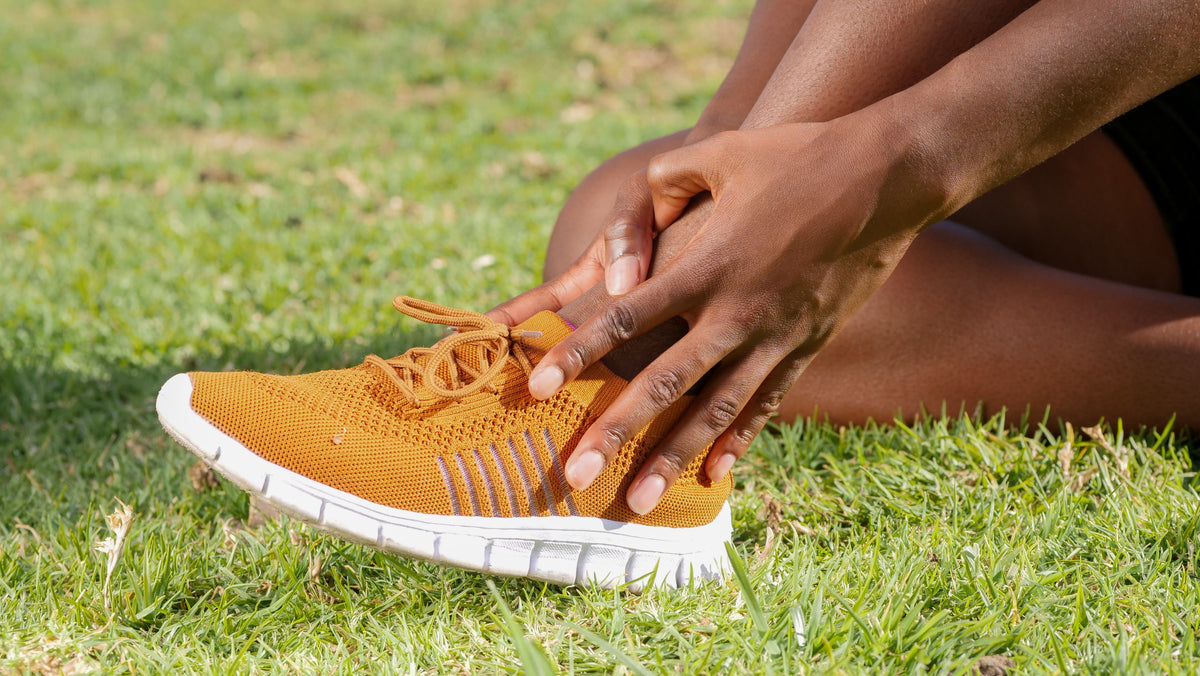Do I need an ankle brace for a sprained ankle and how to prevent a sprained ankle?

Ankle sprains are one of the most common injuries among people of all ages stemming from different types of activities. It occurs when one accidentally rolls or twists the ankle which results in the over stretching or tearing of the ligaments that hold the ankle together. Ankle sprains often involve the outer ligaments of the ankle.
Most sprains can be treated at home with some rest, simple rehabilitation exercises, and the use of braces. But that does not downplay the pain one can experience while recovering from an ankle sprain. In this article, we will be discussing the benefits of using ankle braces to help treat a sprained ankle.
Read more: What ankle injury do I have?
WHAT ARE THE CAUSES AND SYMPTOMS OF A SPRAINED ANKLE?
A person can acquire a sprained ankle when it is forced in an abnormal position that can cause the ligaments to overstretch and potentially tear. Some common accidents can include twisting your ankle from a fall or taking a wrong step, improper landing on the foot from sport, walking or running on an uneven surface and more.
Depending on the severity of the sprain, some of the symptoms you may experience are swelling, pain, discoloration, difficulty in moving or stepping using the injured foot, and instability.
Read more: What is a Sprained Ankle?
WHAT TYPE OF BRACE SUITS A SPRAINED ANKLE?
There are different supports or braces for ankle sprains that can be used whilst recovering or to prevent an injury. There is a vast difference between the comfort and stability an ankle brace can offer based on the materials used in the brace and sizing system. Common neoprene ankle braces are typically uncomfortable to wear for longer periods of time, build up a lot of heat and potentially cause skin irritation. Flat knitted braces such as Bauerfeind's allow for the brace to compress anatomically, breath easily and provide additional support with compression stimulating your proprioceptive senses to improve your awareness and confidence. Additionally, an extensive sizing system beyond the generic 'small, medium and large' is crucial in ensure the right fit and support is achieved.
Another common method to treat an ankle sprain is strapping tape yet it poses a challenge as it is vital to strap the ankle in a proper way to secure and provide the right amount of pressure (consistently) and stability to the ankle each and every time. It can also become quite costly needing multiple purchases of tape as well as the potential for skin irritation with the adhesives used.
The use of ankle braces can be an easier option for both recovery and prevention. There are several types of ankle braces to choose from that can cater to your needs depending on your condition and level of injury or stability required.
Read more: Best Ankle Braces for Ankle Sprains
SUPPORT FOR MILD ANKLE SPRAINS
MALLEOTRAIN ANKLE SUPPORT 
SHOP NOW
SPORTS ANKLE SUPPORT
SHOP NOW
BRACES FOR MODERATE SPRAINS AND STABILITY
MALLEOTRAIN S ANKLE SUPPORT
SHOP NOW
MALLEOTRAIN PLUS ANKLE SUPPORT
SHOP NOW
AIRLOC ANKLE BRACE
SHOP NOW
BRACES FOR SEVERE ANKLE SPRAINS AND STABILITY
MALLEOLOC L3
SHOP NOW
CALIGALOC ANKLE BRACE
SHOP NOW
MALLEOLOC L
SHOP NOW
RECOVERING FROM A SPRAINED ANKLE
The duration of recovery from a sprained ankle will depend on the severity of the injury. Recovering from a minor sprain could take two weeks while more severe cases could take around 12 weeks.
If the treatment recommended does not seem to work for you and pain in the area persists, it is best to seek medical help to ensure that there are no other causes and other conditions can be ruled out.
PREVENTION
Ankle sprains are commonly due to accidents from any activity including sport or even simple walks. Although, there are several tips to take note of that can help avoid acquiring a sprained ankle:
- Warming up before exercise or sport should always be a priority
- Be mindful when walking or running on uneven surfaces
- Use an ankle support or ankle brace (e.g., Sports Support Ankle Dynamic) to aid in recovery and to provide support and stability in everyday activities
- Maintain good muscle strength and balance through regular exercise
Accidents are inevitable but we can implement certain habits to prevent severe injury. Ankle sprains are not considered a serious injury and can be treated at home, but it is important to check with a medical professional if you are uncertain.



